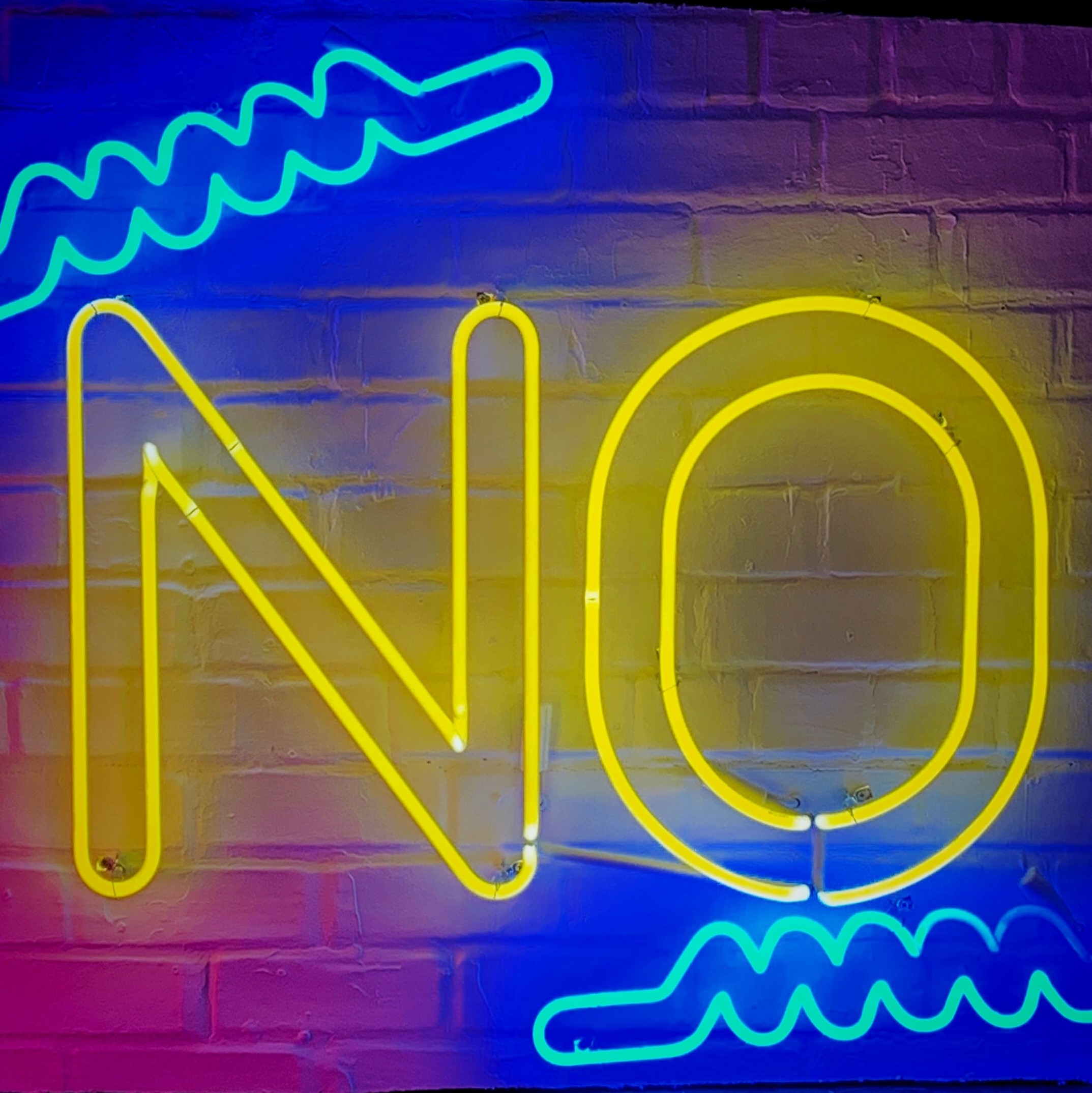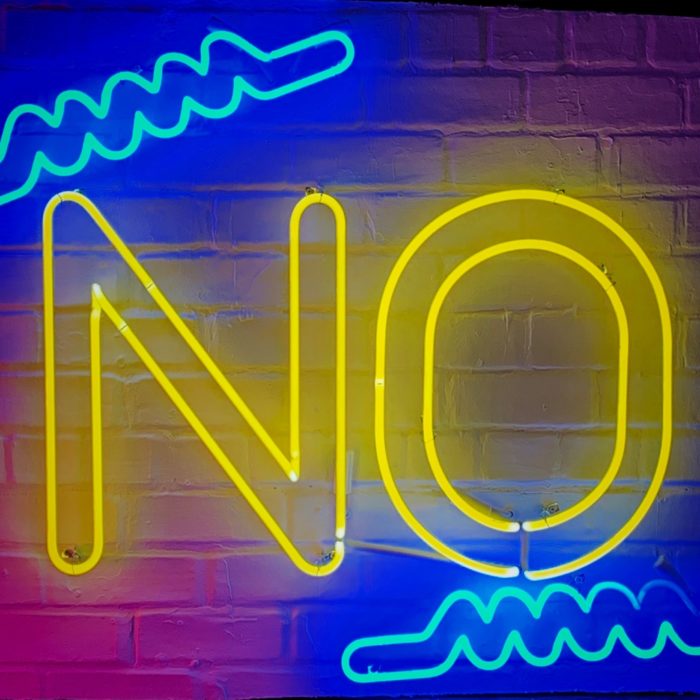

How To Say “No” Nicely
When it comes to making decisions, I have a rule I live my entire life by:
Effort in Vs Benefit out
In a nutshell, for every decision I consider I weigh up what effort is required on my part (time, money, energy, a piece of my soul, etc) versus what benefit I’ll get in return (time, money, energy, nourishment for my soul, etc).
With one eye permanently on the bigger picture I want to achieve:
- If the effort in is more than the benefit out, the decision is a no-brainer: I say “No”.
- If the effort in is less than the benefit out, the decision is a no-brainer: I say “Yes”.
- If the effort in is equal to the benefit out, I make a call on a case-by-case basis.
That may seem a little too black and white for some people’s tastes, but it works for me. By constantly evaluating effort and benefit, I ensure all my energy is focused in the right direction. (And when you learn a major driver in my personal brand is ‘forward momentum’ you’ll understand why.) So that bit = sorted.
The issue comes when I have to say “No”
Having done the relatively easy part of weighing up both sides of the equation, I’m sometimes left with a much tougher job: going back to someone to say “No” to their suggestion/request/offer. (Which I have to do with increasing frequency because my business has grown and my available time has shrunk.)
Much as it might surprise you to discover about a sassy, straight-talking broad like me, it’s not something I relish. So over the years I’ve developed ways to sweeten the pill that I thought it might be useful to share with you:
Tip 1: Make it clear you’re saying “No”
While a direct approach can work well with some people (I’d be one of those) if you’re in any doubt how your “No” might be received, it’s important to choose your words well. One way I do it is:
Thanks for dropping me a line about [their suggestion/request/offer]. However, I’m going to say ‘thank you but no thank you‘.
I purposefully have the word ‘thank’ in there three times so that even though it’s a negative message, it has an abundance of positive language going into their subconscious. (Clever eh?)
It may still sound a little hard, but it’s making sure I don’t fall into that trap of softening my message so much the other person reads my “No” as a “Maybe” – which is no good for either of us.
Tip 2: Give a reason
I usually follow up that initial message by offering one or two reasons for my decision, phrased as:
There are a couple of reasons why I can’t help, including…
Tip 3: Don’t leave them with a dead end
Just because the Effort in Vs Benefit out equation hasn’t worked in their favour on this occasion, it may in the future. So this next bit is aimed at ensuring I don’t burn any bridges, as I try my damnedest to always offer an alternative. Something along the lines of:
If you’d like a suggestion for someone else to try, I know that [name] also does personal branding and may be able to help you instead.
Tip 4: Explain it with your personal brand
If the person is an existing contact, or even if they’re not but they’ve approached me in a way that showed some thought and effort had been put in, I like to do what I call the ‘it’s not you, it’s me’ bit.
Here’s what I’m talking about…
I received a LinkedIn invitation from a woman who runs leadership events and works with female business owners on self-confidence. She personalised her message (top marks for that) and ended by saying: ‘Your work really compliments what I do, so I’m wondering if a chat about collaboration potential might be possible?’
Bearing in mind my audience sits in the sphere of large corporates and not females who run their own businesses, the Effort in Vs Benefit out equation quickly helped me decide the answer would be “No”. So here’s how I replied, offering up a different driver from my personal brand:
Someone once described me as a ‘lone wolf’, which I took to be a very fair and accurate description. I’m someone who has to paddle their own canoe, so I don’t really collaborate with others. (I’ve run my business for coming up to 12 years now and it’s only ever been me plus a part-time PA involved.) I hope you’ll therefore take that as my reason for saying I won’t follow up on your offer of a chat, knowing it’s certainly nothing personal about you. 🙂
She replied to say ‘I hear you, respect you and wish you well.’ Which is a great response to have from someone you’ve just said “No” to!
What other tips do you have for saying “No” nicely? Are there any phrases you could offer that I could nick and begin to use myself? Or do you find saying “No” too hard to do and, if so, what’s the result of that? There’s a comment box below ready and willing to be used for your thoughts please!







Leave a Reply